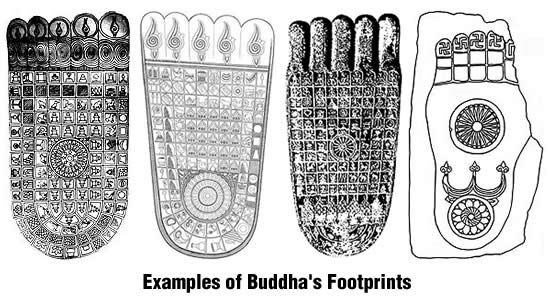Sri Pada: Buddhism most sacred Mountain
*The soles of the Buddha’s feet are said to be flat with all the toes of equal length. On each sole there are one hundred and eight auspicious marks (mangala lakkhana), with the wheel (chakra) the principal mark at the centre while around it are grouped figures of animals, inhabitants of various worlds and other kinds of symbols. The idea is that all things are subject to the Buddha who is lord or all, and under whose feet are all things.
On the top of the Peak broad steps lead up to a walled enclosure containing the rock over which is a tower-like structure. The portion marked off as having the imprint of the Buddha’s foot is about five feet seven inches long and two feet seven inches broad. The hole in the rock in Thailand, which is believed to have the imprint of the Buddha’s right foot, is about five feet long and two feet broad. Buddhists attribute this universal size to the fact (such is the belief) that the Buddha was about thirty-five feet tall. The real footprint on Adam’s Peak is believed to be set in jewels beneath the visible rock.

Sri Pada: Myth, Legend and Geography:
The most famous physical feature of Ceylon is Adam’s Peak, which is situated in the Ratnapura district. It is on the edge of the central massif but its surrounding group of mountains called the Wilderness of the Peak, is so extensive in comparison to the bulk of the other mountain groups that it appears to form a nucleus of its own, separate from the others. It is about 7500 ft high and, though it is the second highest peak in the land, its position in relation to the topography is so dominant that it stands out above all others.
The physical features of a land are often spoken of first, by a foreign visitor. Physical descriptions compare it to a pearl and a teardrop. Lying at the southern point of India its pendant shape appears like a drop of water as it falls. South of it there is nothing but the Antarctic. It is on the major sea route between West and East Asia and therefore was a trading station for the Arabs and a trading station and a colony for the Portuguese, the Dutch and the British. The Arabian Nights has possibly the first reference to it.
